Sanjé James | Familiar Interplay
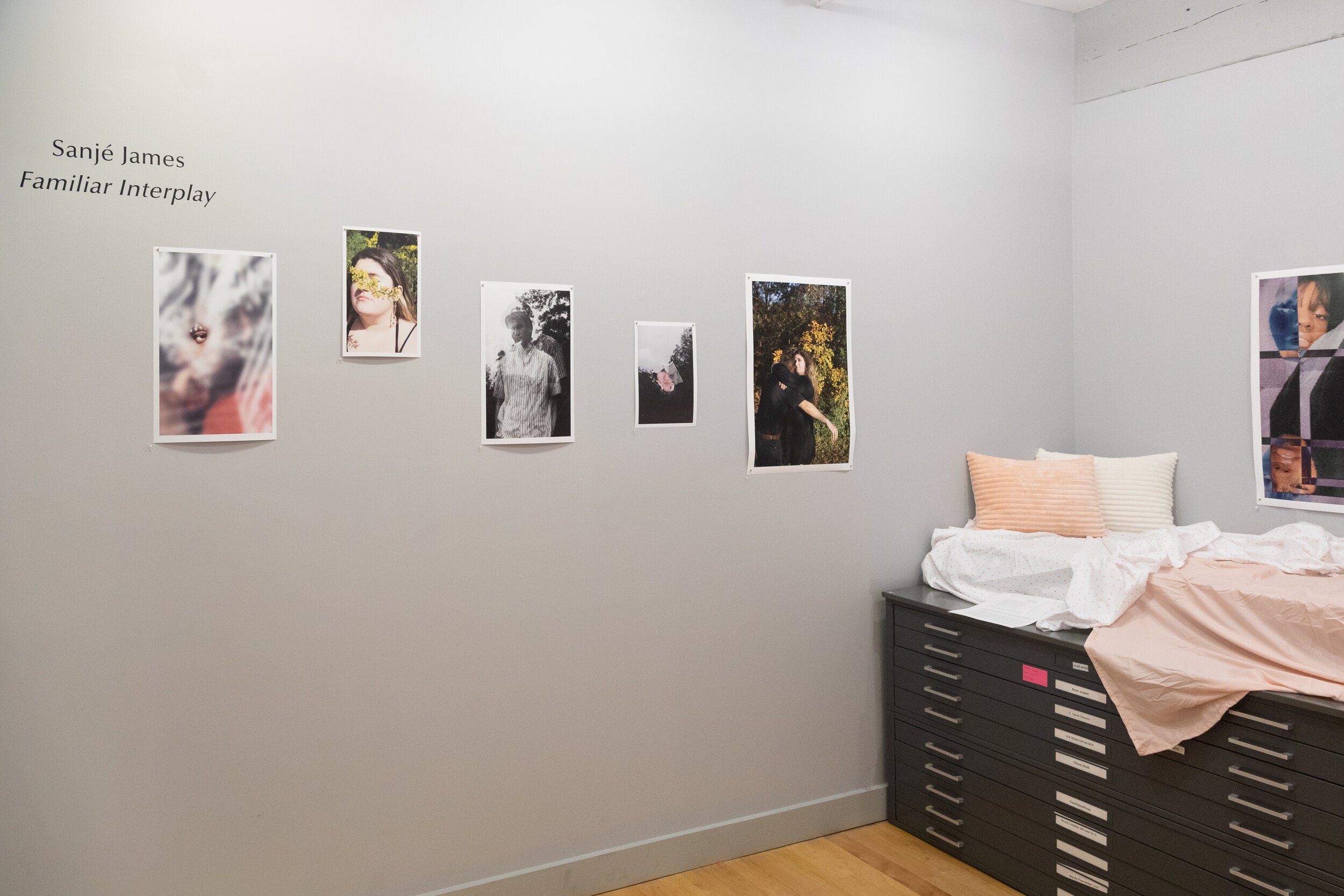
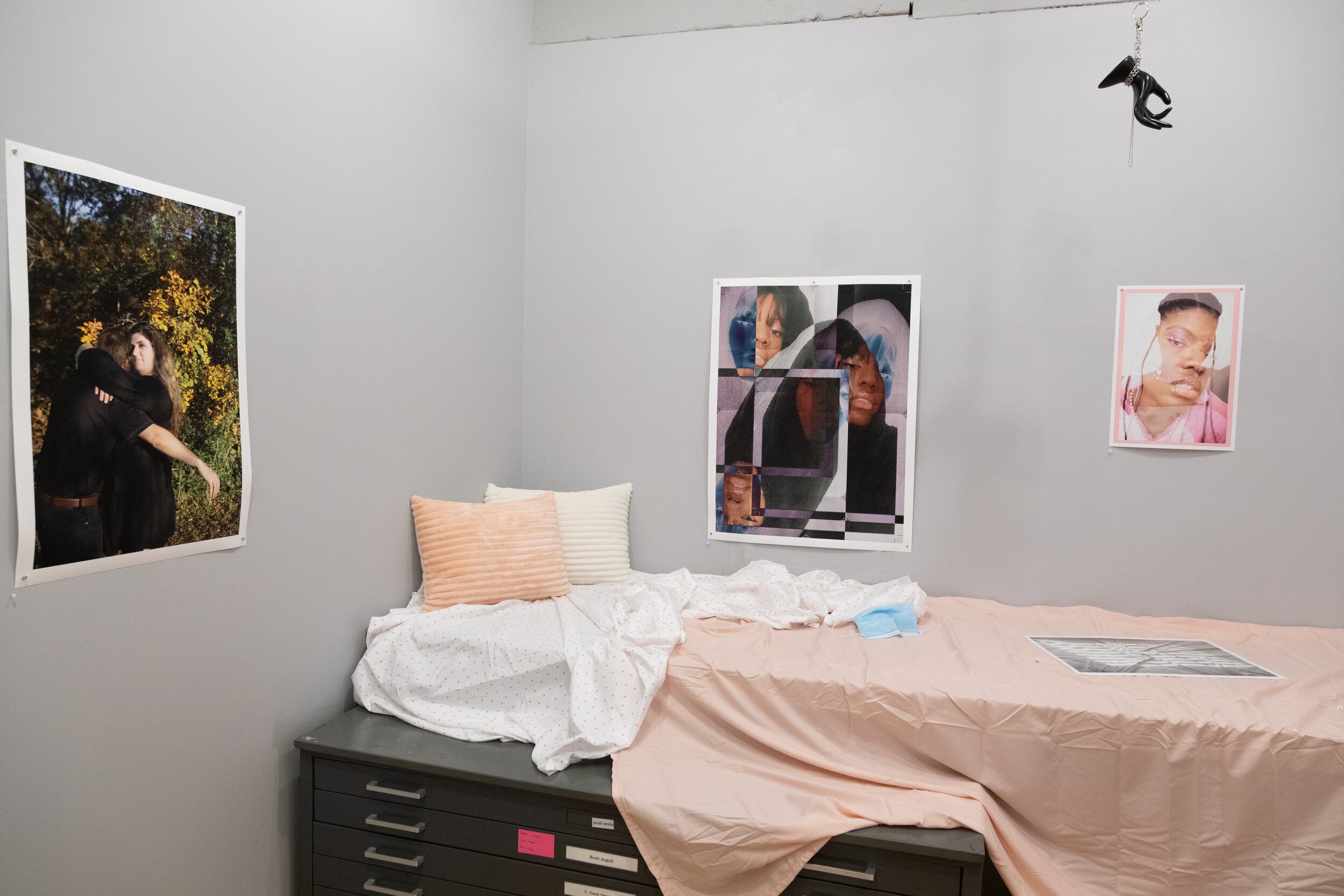
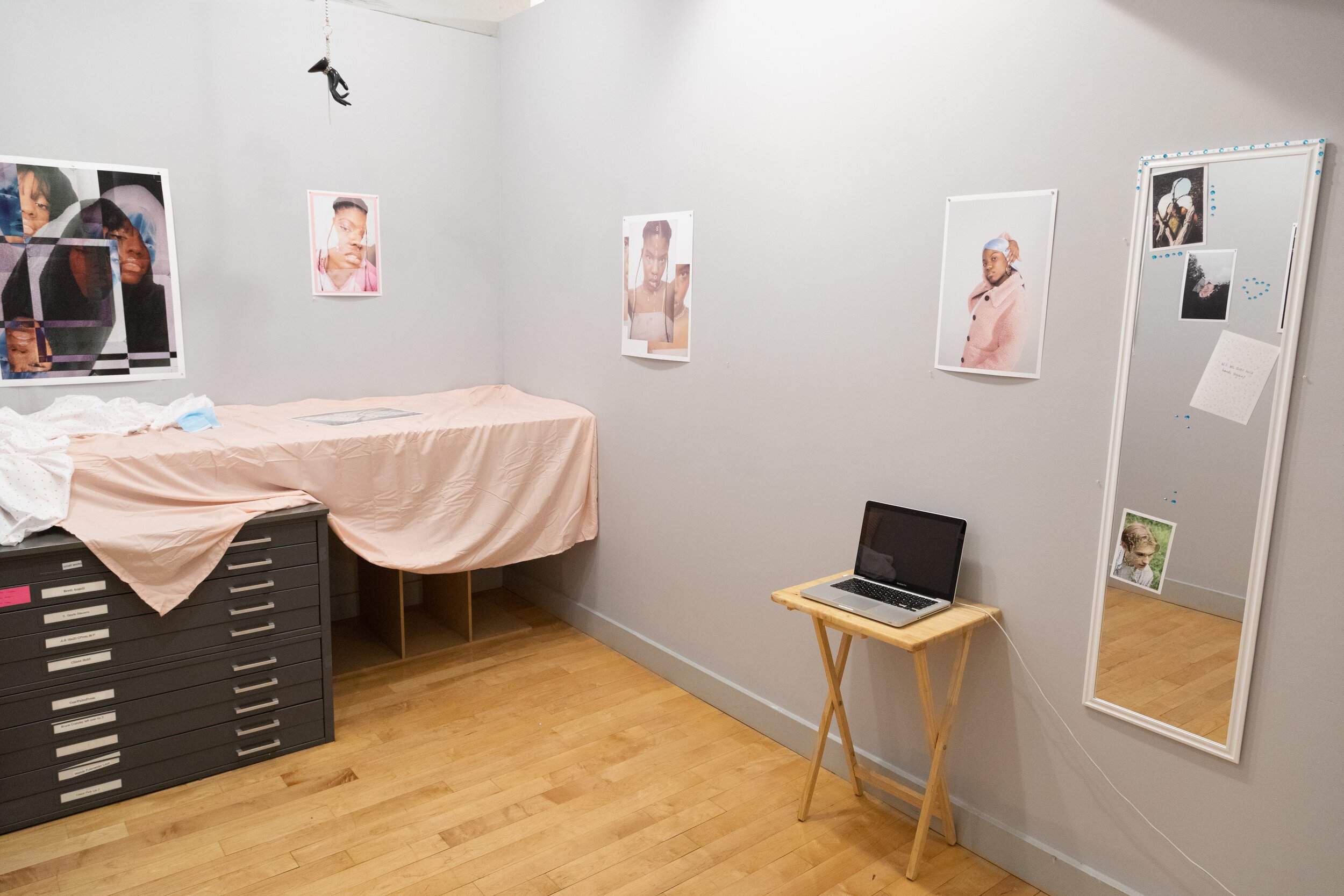
We are pleased to be exhibiting Sanjé James’ Familiar Interplay in the Alcove Gallery. The photographs, video, and installation represent James’ bedroom and her classroom during the Covid-19 pandemic. During her senior year at Lesley University, she took classes on zoom making most of her relationships virtual. Missing the contact and camaraderie she had for the past three years with classmates and professors, she hung images of her friends in her room to have them with her.
My friends and I are in a transition leaving adolescence and growing into adulthood. Through an unexpected haze of queries. Tangible interactions are obsolete. The act of hugging or walking closely with someone is now hazardous. Personable interactions are absent indefinitely. Therefore, platonic relationships are exclusively online. My childhood bedroom has turned into my stage where I perform my growing desire for the attention of others on social media. My friend’s portraits scattered throughout the room as my adored audience. Through mixed media, collage, and photography, my altered avatars flutter through the cloud for anyone to bear witness as I struggle to grow up into an adult in the unaccompanied space. Conversing with AI intelligence has become my new normal.
My life is encapsulated in my childhood bedroom with my friends watching me from the walls attempting to keep them close when they seem unattainable. Through their glossy non-blinking eyes, they observe me scramble across the internet with glaring blue lights in my eyes to find aspects of them in someone’s account. All that is left is my reflections on the screen embodying remixed versions of myself as entertainment. Amidst Alexa mispronounces my name and reports to me unprompted news. SJ 2021
Sanjé James is a twenty-three-year-old multimedia artist who focuses in photography. She received her BFA in Photography at Lesley Art + Design in Cambridge, Massachusetts. James’ work is fueled by topics of race, class, and self-exploration. Through collage and video she layers culture’s influences on her generation and the complexity of being raised in a predominantly white suburb. James challenges her viewers to reflect on the past and the ever-changing way we view the world. This is her first gallery exhibition.
Robert Richfield | BUDDHA + CHRIST
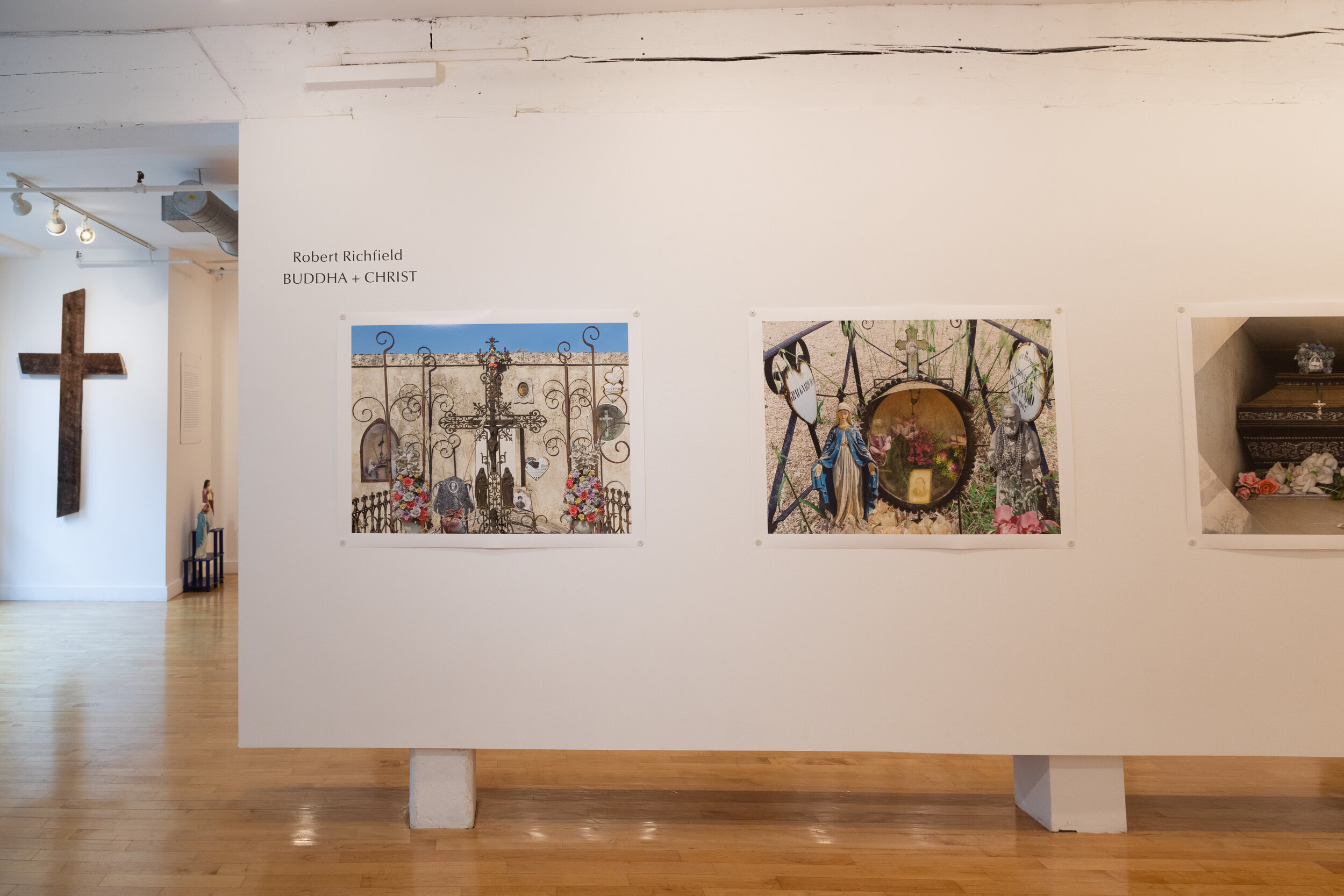
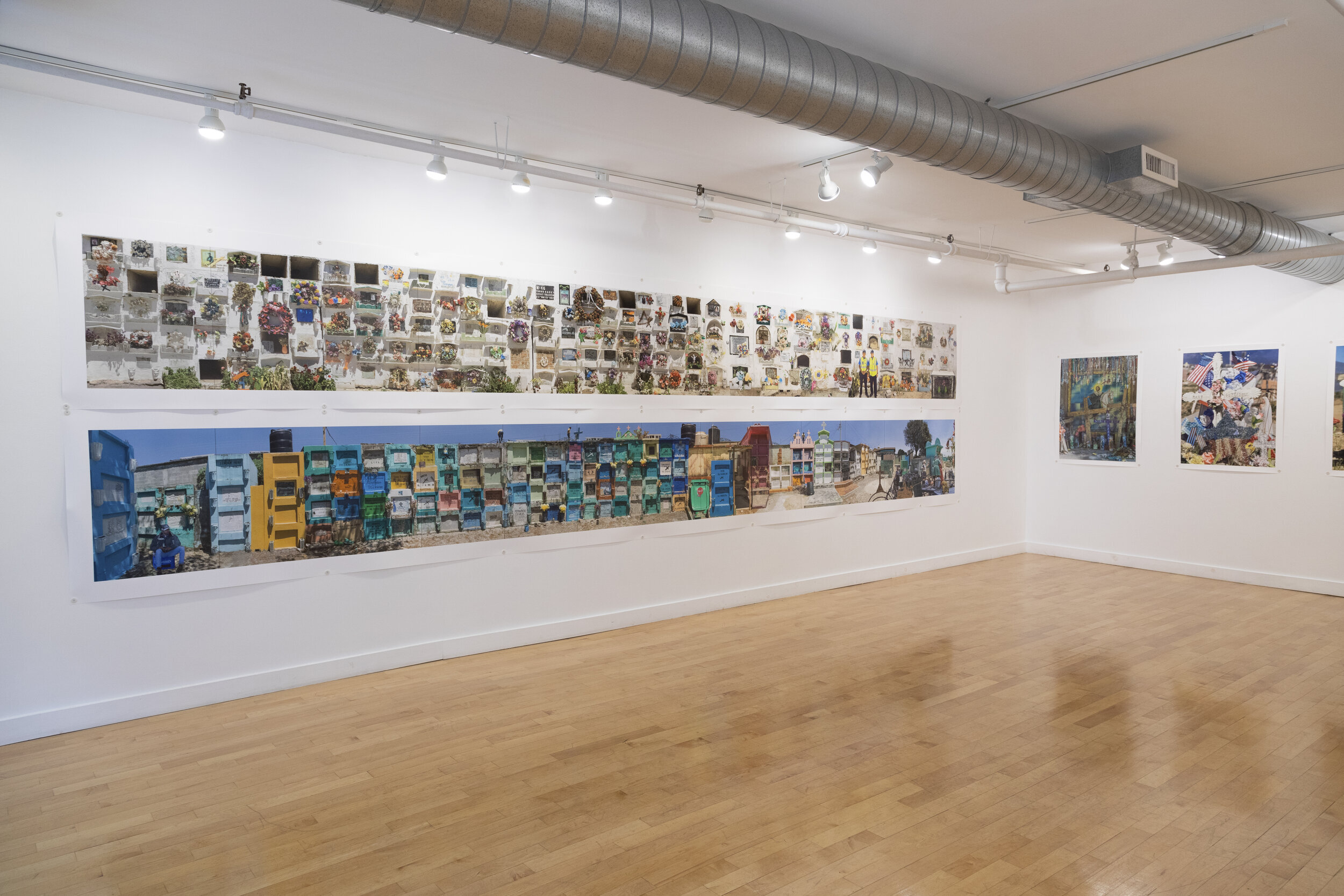
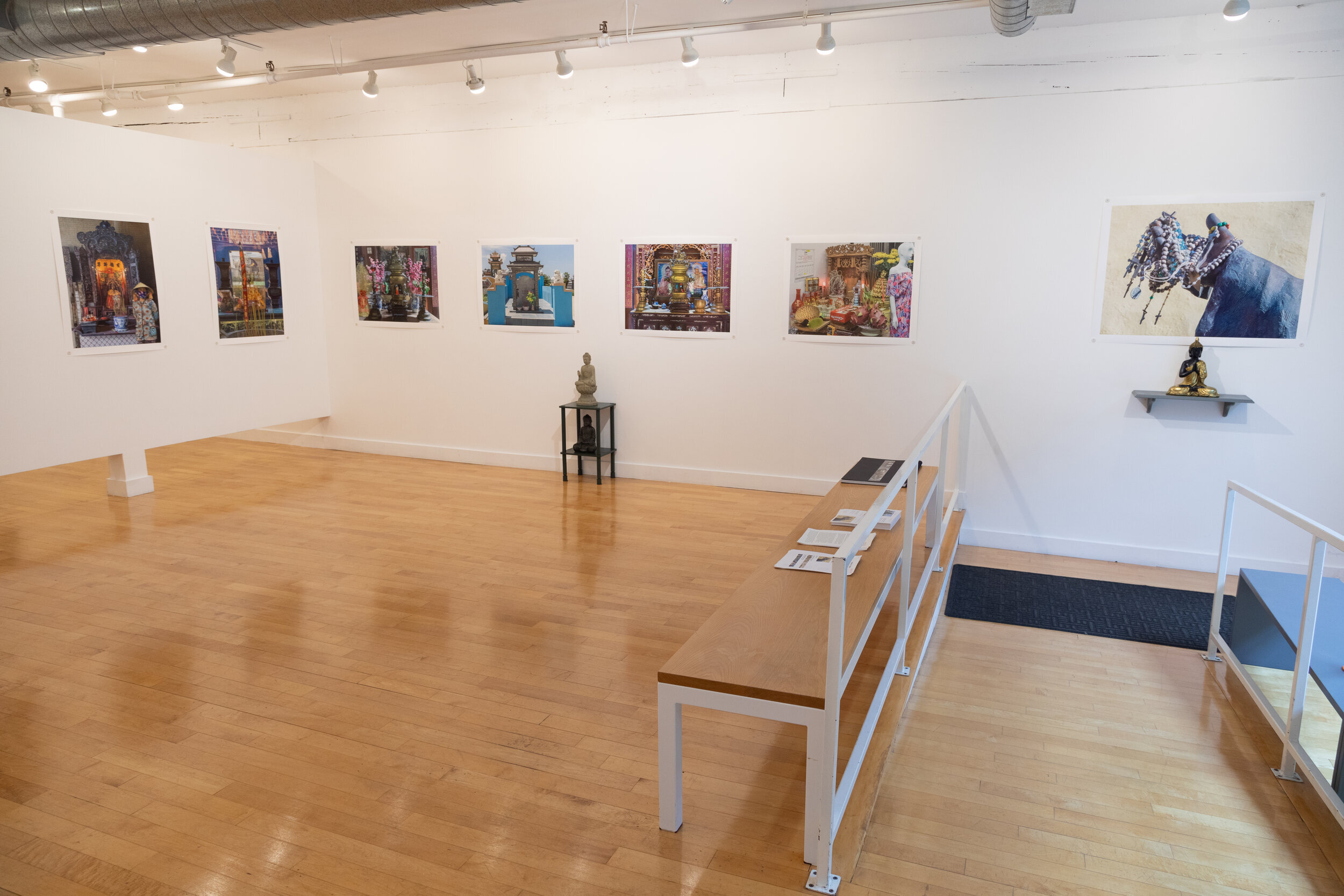
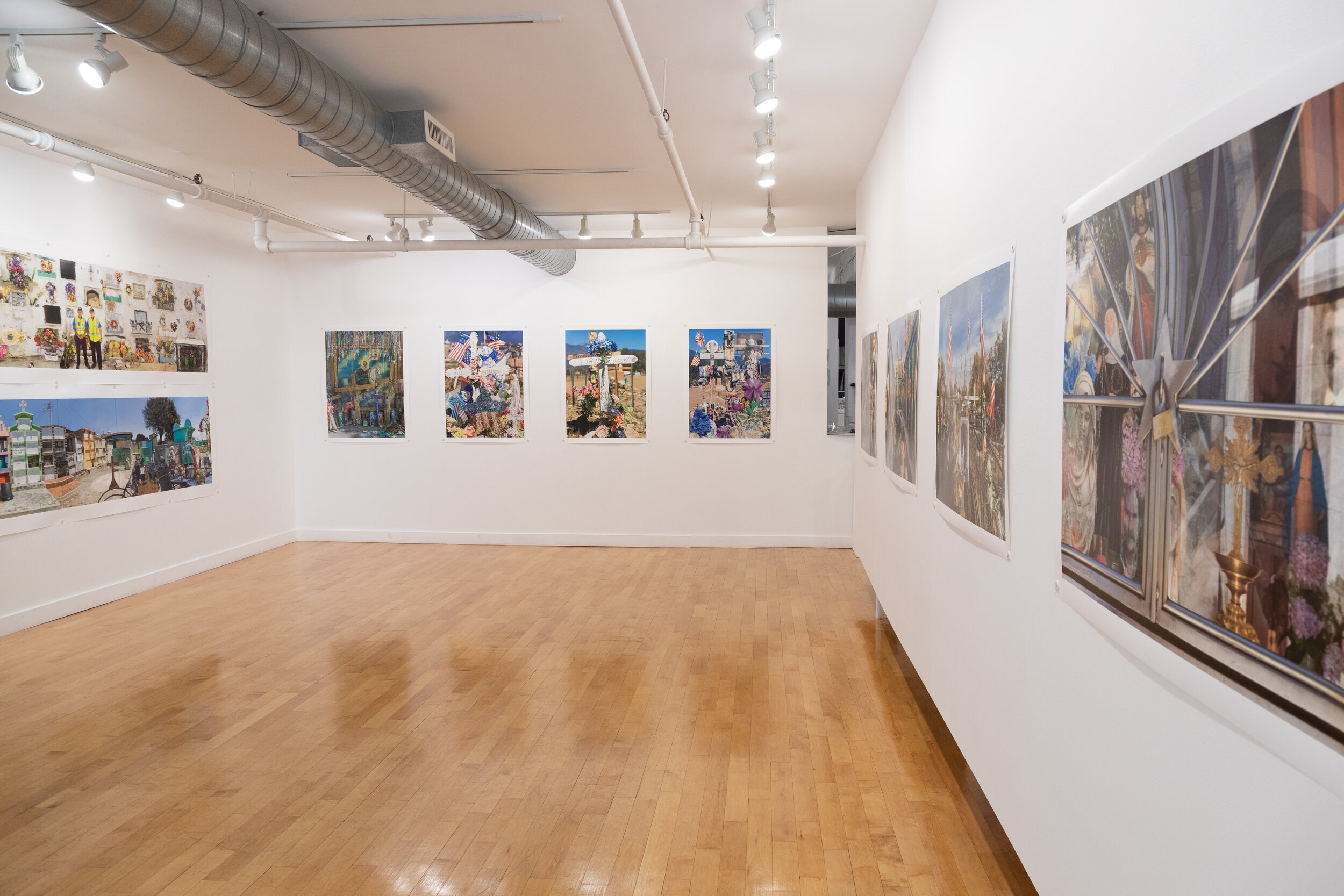
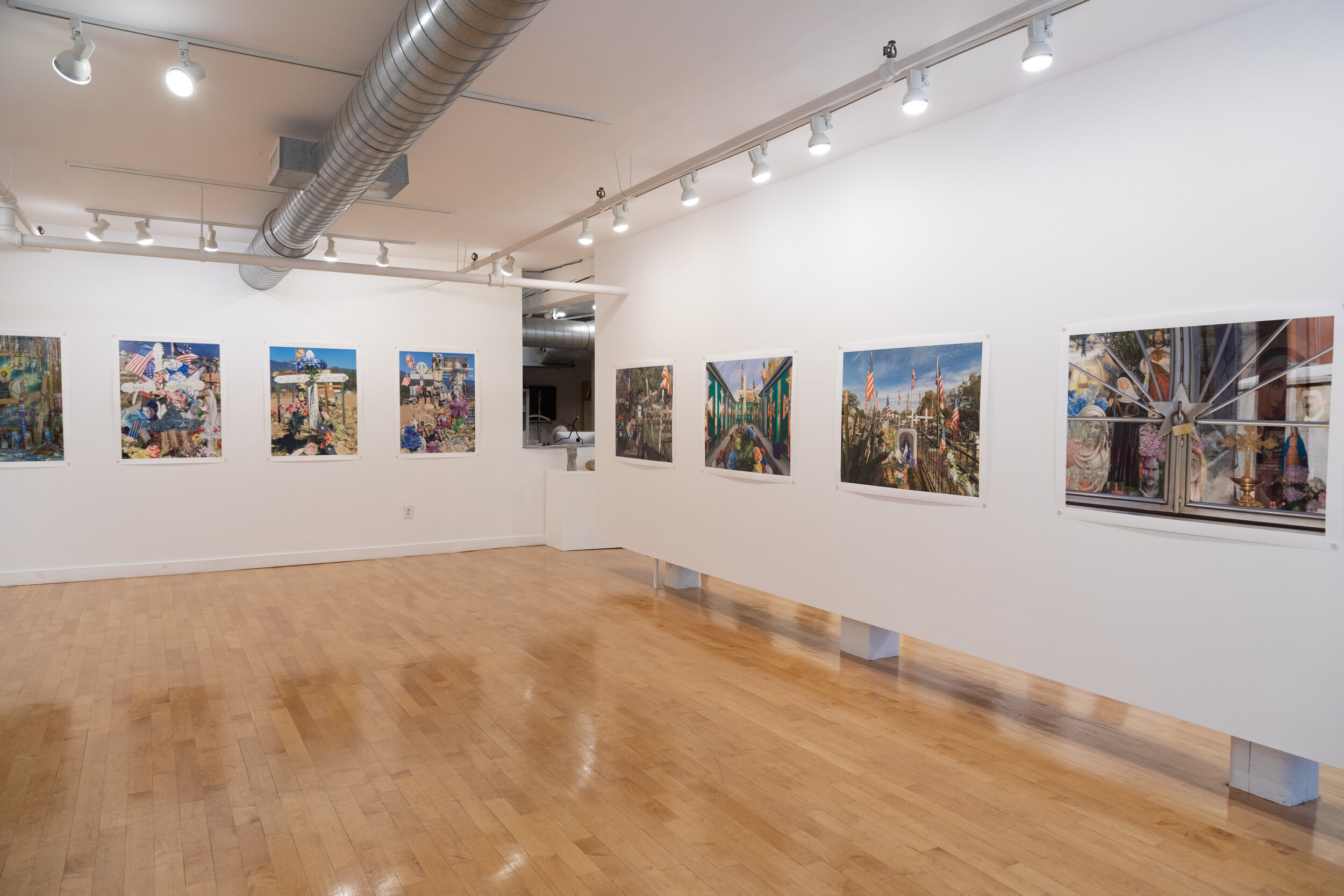
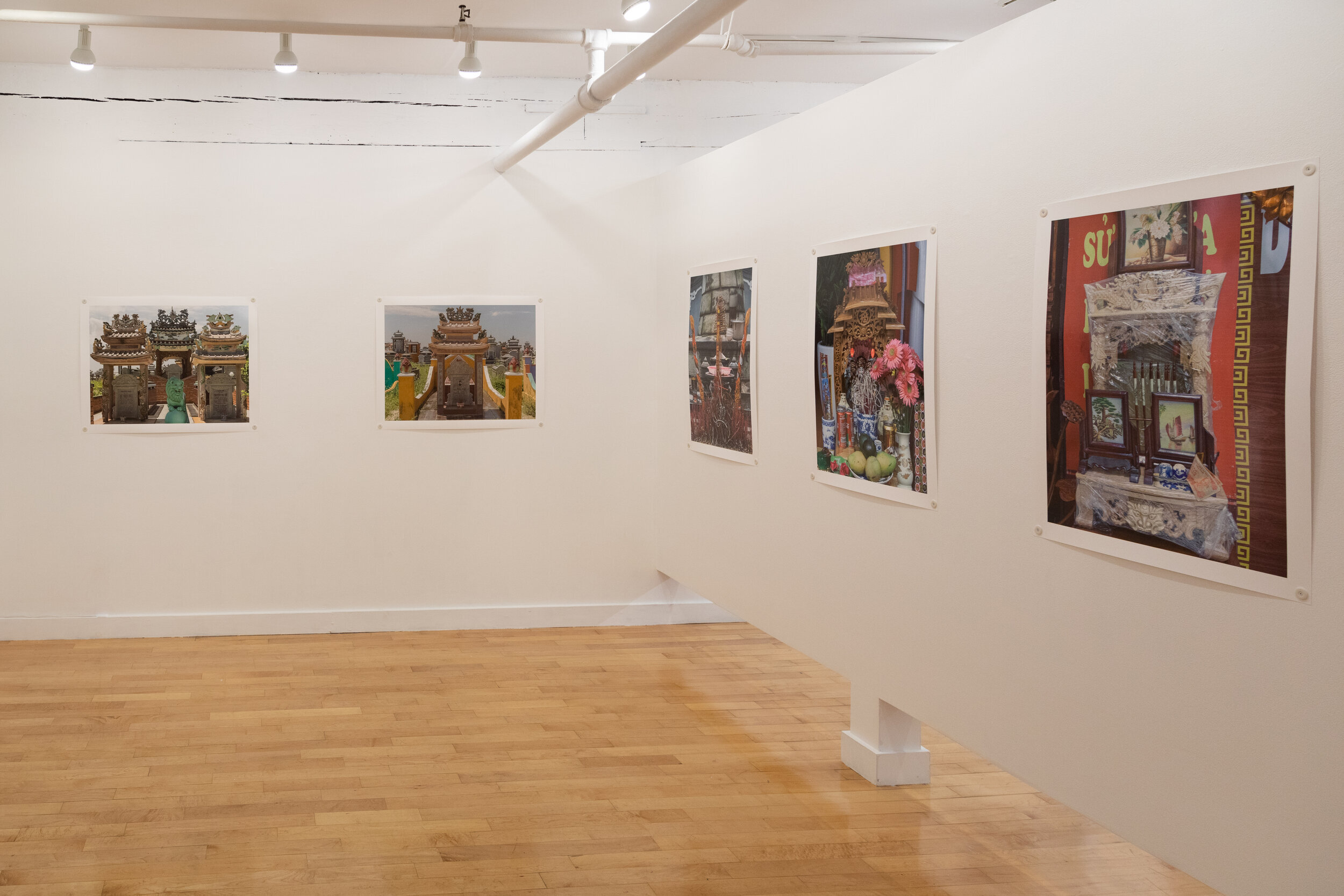
We are pleased to be exhibiting Robert Richfield’s new series, BUDDHA + CHRIST. Richfield has always photographed cemeteries during his travels capturing the ways different cultures remember those who have passed. BUDDHA + CHRIST explores gravesites of each religion – in Vietnam, France, Spain, Portugal, New Mexico, and Guatemala. These deeply saturated color images reveal what remains to remember those who have died – candles, crosses, flowers, photos, flags, political statements, rosaries, incense, and statues – objects that bring comfort and connection to those who mourn.
Religion has never played a significant role in my life. I grew up in a secular Jewish household; my father was an atheist—a practitioner of science and medicine over Jewish law—while my mother, having grown up in the Orthodox community, actively sought to distance herself from her devout upbringing. As adults, my wife and I chose to raise our two daughters the same way. For us, holidays are about family traditions—Christmas tree decorations, pound cake, matzo brei, and Easter egg hunts—rather than religious customs or beliefs. Despite my own secularity, however, I have always been intrigued by the emotional and philosophical importance of religious practices. My father (a pathologist and Army surgeon during World War II) often spoke about the negative repercussions of extreme faith—how religious interpretation has caused more human suffering and death over time than all the pandemics and plagues combined.
I, too, remain acutely aware of the often devastating interplay between religion, politics, and violence—what Comparative Religion scholar James Wellman calls “Belief and Bloodshed.” And yet, as an itinerant photographer, I have also always gravitated toward religious iconography in both cemeteries and shrines. In particular, I am fascinated by the ways different cultures, faiths, and families choose to bury, mourn, honor, and commemorate the dead. Through my work, I also explore the stark contrasts between these visual expressions of faith: the gruesome imagery of Christ’s crucifixion juxtaposed with the serene imagery of Buddha’s enlightened state; or the austerity of Jewish gravesites juxtaposed with the vibrancy of Christian shrines, brimming with flowers, knickknacks, and personal ephemera. Cemeteries and shrines, I believe, are gateways into the lives and cultures they memorialize. RR 2021
Richfield first became interested in photography as a teenager. He studied photography at Rhode Island School of Design, receiving a BFA in Photography in 1969 and MFA 1972. His professors, Harry Callahan and Aaron Siskind, profoundly influenced him. Photographs by Robert Richfield are in the collections of the Art Institute of Chicago, Center for Creative Photography, Cincinnati Art Museum, J. Paul Getty Museum, High Museum of Art, and the Museum of Fine Arts, Boston. His work is also featured in many private, institutional, and corporate collections including Bank of America, Fidelity Investments, Goldman Sachs, and JP Morgan Chase.
